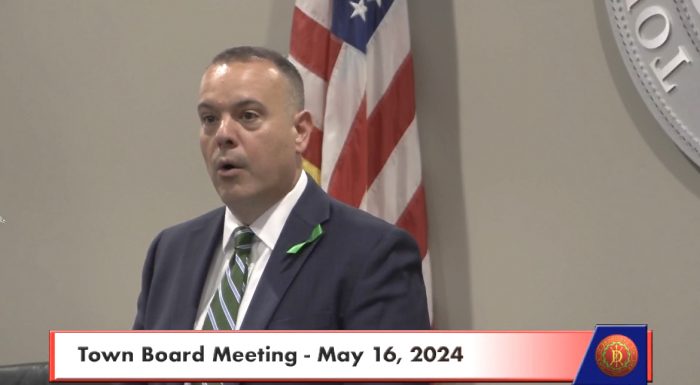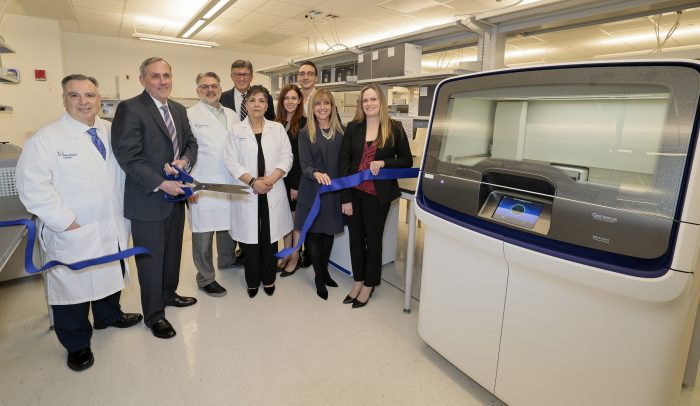Brookhaven Town Board approves multiple proposals in May meeting, Town Supervisor addresses mental health awareness
By Samantha Rutt
All members of the Brookhaven Town Board at the May 16 meeting sported a green ribbon to signify their support for mental health awareness. “We are all wearing green ribbons … that is for mental health,” town Supervisor Dan Panico (R) said. “Statistics show one in five people in this country have a mental health issue. It is an issue that touches all of our lives, some of our families and what we want in the Town of Brookhaven for you to know you are not alone.”
Panico continued, “There is help out there. If you feel you need help or a family member needs help, contact the supervisor’s office or your councilperson.”
Moving on to the public hearing portion of the meeting, several applications were addressed including a modified site plan of Mount Sinai Meadows. The plan to amend the excess materials to be removed from the site was approved and will have no financial impact.
In Centereach, the Centereach Hyundai filed an application for a change of use for the reduction of the building size from 45,150 square feet to 40,091 square feet, update landscaping, lighting and parking areas, special permit for outdoor parking or overnight parking with variances for property located on the north side of Middle Country Road. The application was approved with oversight from the town Environmental Protection Division ensuring no significant impact on the environment.
Soon after, the board addressed the resolution agenda portion of the meeting. As part of the town’s agreement with the Long Island Housing Partnership, an extension of the initial agreement was granted. This agreement from May 25, 2022, was created under Title II of the National Affordable Housing Act of 1990. The general purposes of the program include expanding the supply of decent and affordable housing, particularly rental housing, for low and very low-income persons. The program is fully supported with HUD Federal funds. There is an adequate budget of $90K remaining resulting in no financial impact.
A request was made by District 1 councilmember, Jonathan Kornreich (D-Stony Brook) for increased travel efficiency of the Port Jefferson Ferry terminal. The Bridgeport and Port Jefferson Steamboat Company is currently in the process of a major construction project at the ferry terminal by connecting to a sewer line located in a Port Jefferson Village parking lot. Approval of the councilmember’s request is awaiting state Legislature approval.
Still pending decision, the application by Staller Associates for a zone change from Business to a Commercial Redevelopment District located on Patchogue Road in Port Jefferson Station. The application, initially submitted in 2021, proposes a demolition of an existing commercial building and an addition of a new mixed-use development. The proposed development includes seven commercial buildings for retail, restaurant, health club, professional/medical buildings as well as 280 dwelling units — 20% of which will be marketed as affordable housing units.
The next Town Board meeting will be held on June 6 at the Town Hall in Farmingville. For more information about the Town Board visit brookhavenny.portal.civicclerk.com.







































